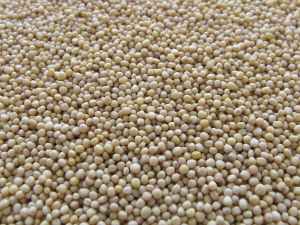Recommending any particular silvicultural system for a species is not a good idea. The silvicultural system for a particular forest stand should be formulated or selected on the basis of species, forest condition, forest owner's objectives and so on.
Sal ( Shorea robusta)
Silvicultural characteristics Strong light demander, Good coppicer , Seedling die back due to frost, drought, fire , and dense overstorey, Annual seeders but good seed years after every 2 years, Light winged seeds and seeds dispersed by winds.
Silvicultural SystemsSelection system, Irregular shelterwood system, Uniform shelterwood system, One cut shelterwood system, Clearfelling system, Coppice with standards, Coppice with reserves, Simple coppice.
Khair (Acacia catechu)
Silvicultural characteristicsStrong light demander, Seedlings are susceptible to severe frost, Drought resistant, Coppices well unless it is under shade of other species, Seeds produce in abundance, Seeds dispersed by wind and water, requires protection from grazing and browsing.
Silvicultural systemsClearfelling and Plantation, Simple coppice, coppice with standards, Seed tree method.
Sissoo ( Dalbergia sissoo)
Silvicultural characteristicsStrong light demander, Good coppicer, Annual seeder and seeds produced abundantly, Seeds dispersed by wind and water, Older seedlings can tolerate mild frost, Should be protected against grazing and browsing.
Silvicultural systemsSeed tree method, Clearfelling and plantation by Taungiya, Two storyed high forest system, Simple coppice, Coppice with standards, Coppice with two rotation system.
Chilaune ( Schima wallichi)
Silvicultural characteristicsNot frost hardy,Coppices very well, Good seed year are frequent , Winged light seeds dispersed by wind, Moderately shade tolerant but later it benefits from full overhead light, Capable of colonizing plantations of other species.
Silvicultural systemsSimple coppice, coppice with two rotation, Coppice with standards, Selection coppice, Selection system.
Katus (Castanopsis indica )
Silvicultural characteristicsModerately shade tolerant, Frost hardy, Benefits from overhead light in later stage, Young seedlings are frost tender, Coppices well.
Silvicultural systemsSimple coppice, Coppice with two rotation, Coppice with standard, Selection coppice, Selection system.
Deodar( Cedrus deodara)
Silvicultural characteristicsShade bearer and young seedlings benefit from side shade, Winged Seeds dispersed by wind, Young seedlings don't suffer from frost, Very sensitive to fire, Good seed years after every 3 years, Most of the seeds fall close to the parent tree, Profuse regeneration in favorable sites.
Silvicultural SystemsSingle tree selection, Irregular shelterwood system, Uniform shelterwood system (40-50 seed trees/ha).
 Photo by Pixabay on Pexels.com[/caption]
Photo by Pixabay on Pexels.com[/caption]


